Rachael Dickzen's Blog, page 8
May 7, 2020
I'm Doing SO MANY Virtual Dance Workshops with Different Six Alternates!
All My Six Posts!
Six Alternate and Dance Captain Collette Guitart’s Dance Workshop and Q&A
Six Alternate Vicki Manser's Dance Workshop and Q&A!
Six UK Tour Alternate/Dance Captain Harriet Watson's Virtual Workshop!
The Historical and Modern Inspirations in the Costumes of Six the Musical: Wives 1-3
The Historical and Modern Inspirations in the Costumes of Six the Musical: Wives 4-6
Updated Six the Musical Costumes for Broadway!
The Alternate Costumes of Six the Musical
The Historical Inspirations and Costumes of the Ladies in Waiting of Six
The Tudor Fashion Elements of the Costumes in Six (with Painting References)
How the Six Alternates Change Their Styling for Each Queen
As I mentioned in my recent post on the dance workshop and Q&A with Harriet Watson (hosted by the brilliant Theatre Fan Parties), I’ve already signed up for a few others!
Me. A non-dancer. Doing numerous workshops with professional dancers in an intimate setting where they can TOTALLY watch me flail about badly. (Harriet was VERY NICE about my bad dancing in an Instagram comment, but let’s just be honest here)
Me. The person who avoids waking up before 10 am as much as possible. Getting up at 5 am on a weekend numerous times.
This is how committed I am to the Queendom and getting y’all good Six coverage for my blog, y’all. Also, realistically, with all this self-isolation, what else am I going to do?
[FYI - I’ve seen the Six alternates referred to as alternates, swings, and understudies, in just a ton of different outlets, so I’m using the terms interchangeably, although in most musicals, that’s not the case]
Here are all the classes I’m taking and when! I’ll update these with the blog links as I post them!
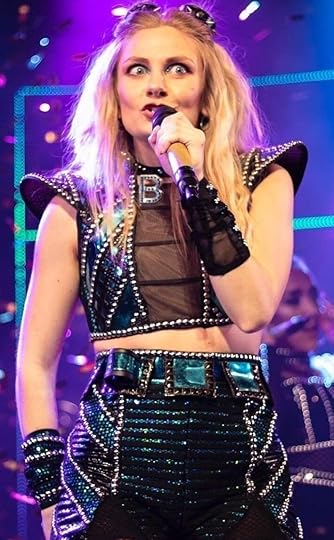
Vicki Manser as Anne Boleyn
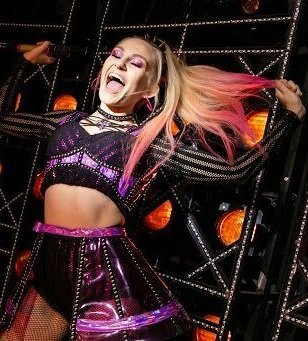
Vicki Manser as Katherine Howard
Six Workshop with VIcki Manser, 5 am ET, Saturday, May 9
Manser was an alternate in the West End production of Six and was the first cover for Anne Boleyn and Katherine Howard (although she did end up covering every role). She later played Katherine Howard. She left the show on December 15, 2019.
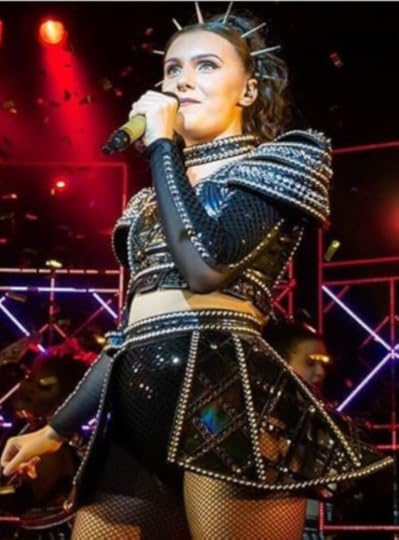
Collette Guitart
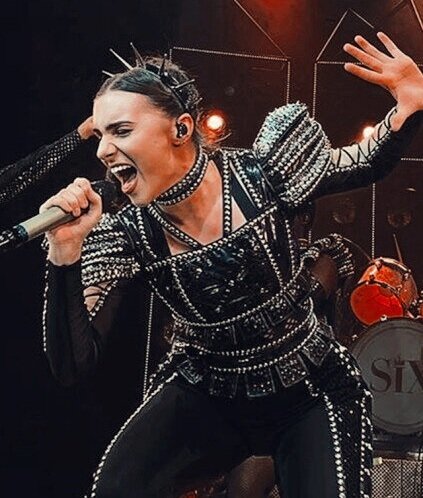
Collette Guitart, probably going on for Catherine Parr (based on the costume)
Six Workshop with Collette Guitart, 5 am ET, Saturday, May 16
Guitart is currently an alternate in the West End production of Six and also serves as the production’s dance captain.

Jen Caldwell going on as Boleyn
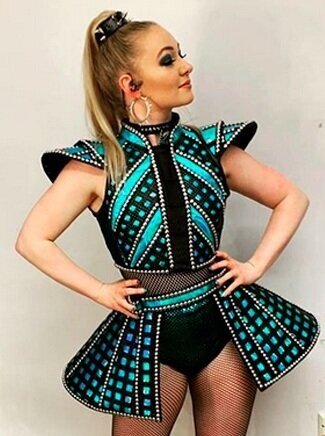
Jen Caldwell
Six Workshop with Jen Caldwell, 7 am ET, Saturday, May 23
Caldwell is a swing on the 2019-2020 UK tour of Six the Musical and also serves as their social media captain. She temporarily served as a swing in the West End production after performing as Anna of Cleves for several shows as an emergency cover. Her first cover is Anne Boleyn and Katherine Howard, but she’s played all the roles.
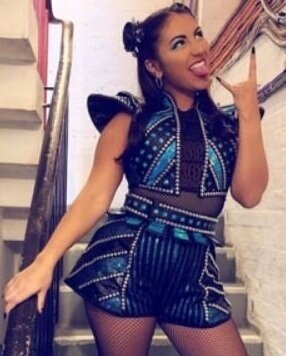
Cherelle Jay as Anne Boleyn
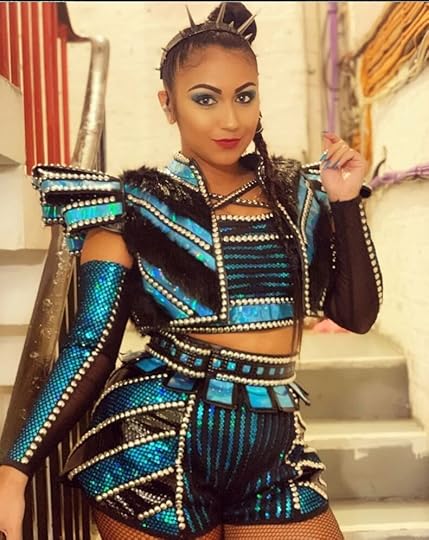
Cherelle Jay as Anne of Cleves
Jamie (presumably “Everybody’s talking about Jamie”) Workshop with Cherelle Jay, 7 am ET, Sunday, May 24
Jay is a swing in the West End production of Six. Her first cover is Anne Boleyn and Anna of Cleves. It doesn’t look like she’s covered for Catherine of Aragon or Katherine Howard yet.
Her workshop is for a dance from “Everybody’s Talking About Jamie,” but I’ve been told it’s okay to ask questions about Six.
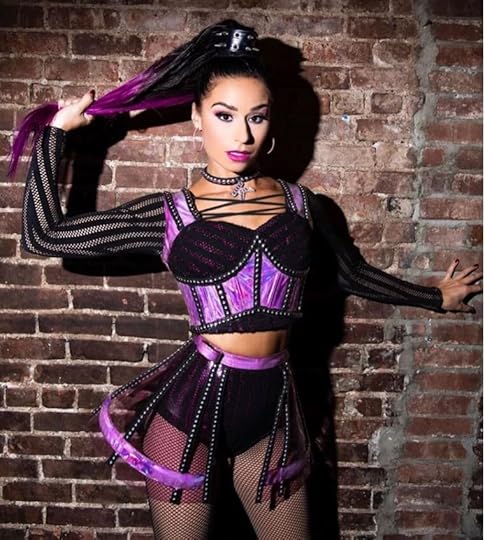
Sam Pauly
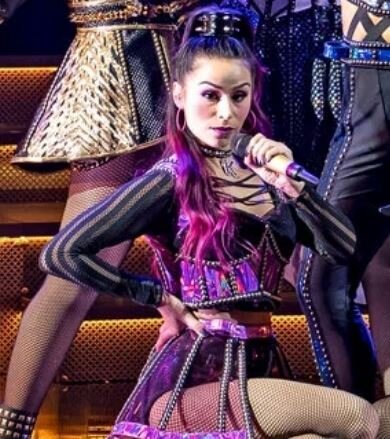
Sam Pauly

Sam Pauly
ADDED TO POST 05/16/2020:
Six Broadway Workshop with Sam Pauly, 10 AM ET, Monday, May 25
Pauly is currently playing Katherine Howard in the Broadway production of Six. She also played the same role in the North American Tour.
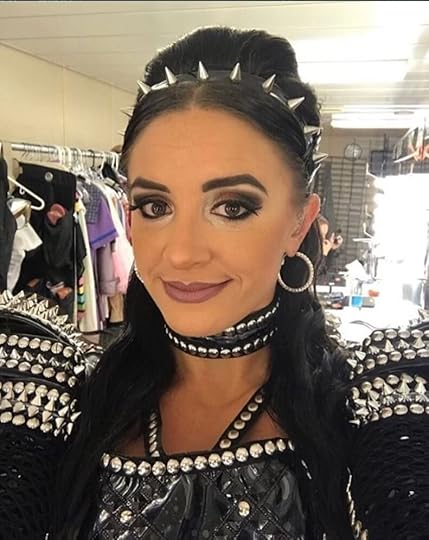
Natalie Pilkington

Natalie Pilkington
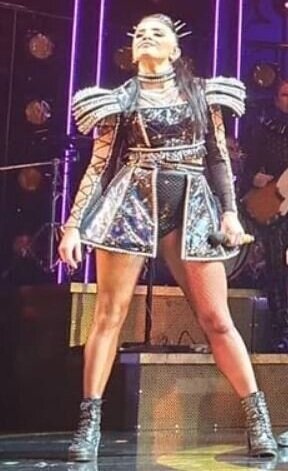
Natalie Pilkington
ADDED TO POST 05/16/2020:
Six Workshop with Natalie Pilkington, 7 AM ET, Saturday, May 30
Pilkington was the show captain and one of two swings in the Norwegian Bliss cruise production of Six. Her first covers were Catherine of Aragon, Anna of Cleves, and Catherine Parr.
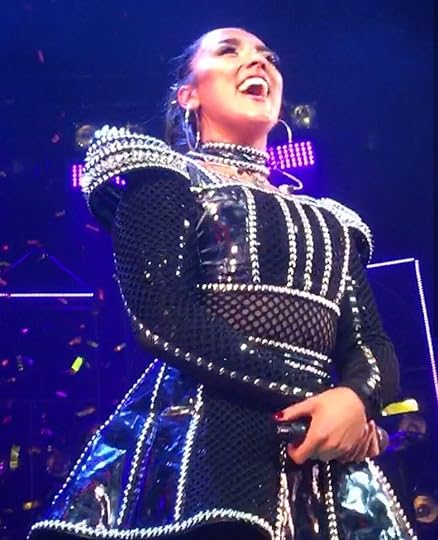
Grace Mouat
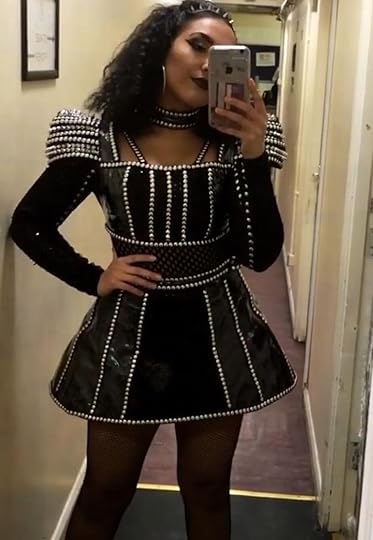
Grace Mouat, likely going on as Catherine of Aragon
& Juliet Workshop with Grace Mouat, 5 am ET, Sunday, May 31
Mouat was a swing and the dance captain in the West Production of Six and in the 2018 UK tour. She left the show on August 18, 2019 and currently plays Judith and serves as the first cover for Juliet in & Juliet. Her workshop is for a dance from “& Juliet,” but I’ve been told it’s okay to ask questions about Six.
What questions should I ask them, y’all? What burning thoughts do you have about being a Six alternate?
I'm Doing FIVE Virtual Dance Workshops with Different Six Alternates!
As I mentioned in my recent post on the dance workshop and Q&A with Harriet Watson (hosted by the brilliant Theatre Fan Parties), I’ve already signed up for a few others! And as of now, I’ve signed up for five more Zoom classes.
Me. A non-dancer. Doing five workshops with professional dancers in an intimate setting where they can TOTALLY watch me flail about badly. (Harriet was VERY NICE about my bad dancing in an Instagram comment, but let’s just be honest here)
Me. The person who avoids waking up before 10 am as much as possible. Getting up at 5 am on a weekend numerous times.
This is how committed I am to the Queendom and getting y’all good Six coverage for my blog, y’all. Also, realistically, with all this self-isolation, what else am I going to do?
[FYI - I’ve seen the Six alternates referred to as alternates, swings, and understudies, in just a ton of different outlets, so I’m using the terms interchangeably, although in most musicals, that’s not the case]
Here are all the classes I’m taking and when!

Vicki Manser as Anne Boleyn

Vicki Manser as Katherine Howard
Six Workshop with VIcki Manser, 5 am ET, Saturday, May 9
Manser was an alternate in the West End production of Six and was the first cover for Anne Boleyn and Katherine Howard (although she did end up covering every role). She later played Katherine Howard. She left the show on December 15, 2019.

Collette Guitart

Collette Guitart, probably going on for Catherine Parr (based on the costume)
Six Workshop with Collette Guitart, 5 am ET, Saturday, May 16
Guitart is currently an alternate in the West End production of Six and also serves as the production’s dance captain.

Jen Caldwell going on as Boleyn

Jen Caldwell
Six Workshop with Jen Caldwell, 7 am ET, Saturday, May 23
Caldwell is a swing on the 2019-2020 UK tour of Six the Musical and also serves as their social media captain. She temporarily served as a swing in the West End production after performing as Anna of Cleves for several shows as an emergency cover. Her first cover is Anne Boleyn and Katherine Howard, but she’s played all the roles.

Cherelle Jay as Anne Boleyn
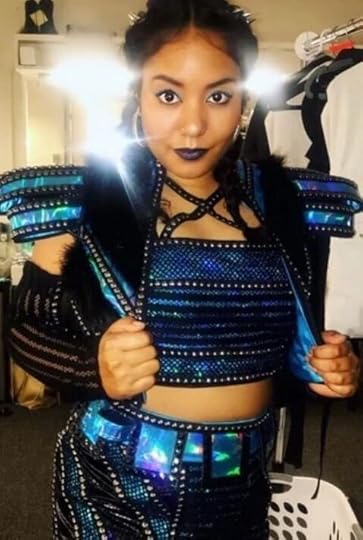
Cherelle Jay as Anne of Cleves
Jamie (presumably Everybody’s talking about Jamie) Workshop with Cherelle Jay, 7 am ET, Sunday, May 24
Jay is a swing in the West End production of Six. Her first cover is Anne Boleyn and Anna of Cleves. It doesn’t look like she’s covered for Catherine of Aragon or Katherine Howard yet.
Her workshop is for a dance from “Everybody’s Talking About Jamie,” but I’ve been told it’s okay to ask questions about Six.

Grace Mouat

Grace Mouat, likely going on as Catherine of Aragon
& Juliet Workshop with Grace Mouat, 5 am ET, Sunday, May 31
Mouat was a swing and the dance captain in the West Production of Six and in the 2018 UK tour. She left the show on August 18, 2019 and currently plays Judith and serves as the first cover for Juliet in & Juliet. Her workshop is for a dance from “& Juliet,” but I’ve been told it’s okay to ask questions about Six.
What questions should I ask them, y’all? What burning thoughts do you have about being a Six alternate?
May 5, 2020
Musical Monarchs and Music Distribution During Renaissance Times
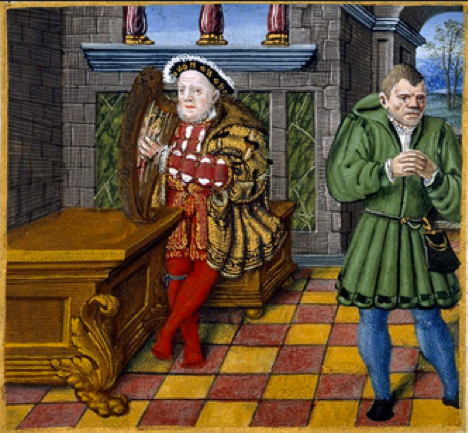
Pictured with Will Sommers- Royal MS. 2 A XVI, Henry VIII’s Psalter, British Library-London.
Apparently I answer Tudor and Shakespeare questions in way too much depth on Reddit for fun now. I’ve had trouble writing or revising fiction since the pandemic and self-isolation began, but researching and writing about history calms me down in a way nothing else does. And AskHistorians on Reddit has a wonderful supply of various questions that haven’t been answered yet.
So here ya go.
Original source of the question, which had several parts, indicated in italics below.
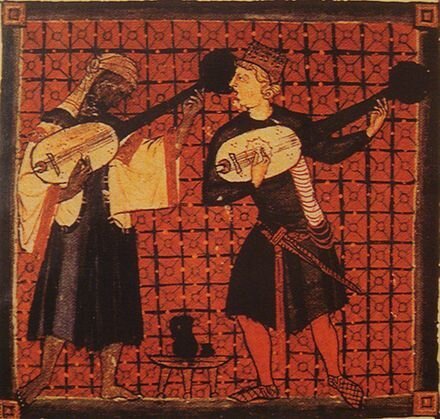
Christian and Muslim playing lutes in a miniature from Cantigas de Santa Maria of Alfonso X
Was composition an expected skill of a monarch?
Musical knowledge, at least, was an important part of every noble's education in late medieval and renaissance England; royal children would have been given private lessons in various instruments, singing, and musical theory from a fairly early age. All of the Tudors, in particular, were interested in music and were highly trained. There are numerous records of Henry VII and his wife Elizabeth of York purchasing musical instruments both for themselves and their children. Henry VIII's children Mary, Elizabeth, and Edward were all described as excellent musicians during their lives. Mary and Edward were proficient at the lute, while Elizabeth was apparently quite good at playing the virginals.
At least two of the King Henrys were definitely musical composers, as we have some of their surviving music!
-There are two pieces in the collections of the British Library attributed to "Roy Henry"; scholars now seem to think this author was actually Henry V.
-Henry VIII's love of music stood out even among all the music lovers of his family. He played numerous instruments - at one point, records of his property showed that he owned 78 flutes, 76 recorders, 10 trombones, 14 trumpets, and 5 bagpipes! We also know that he played the organ, other keyboard instruments, viols, and lutes.
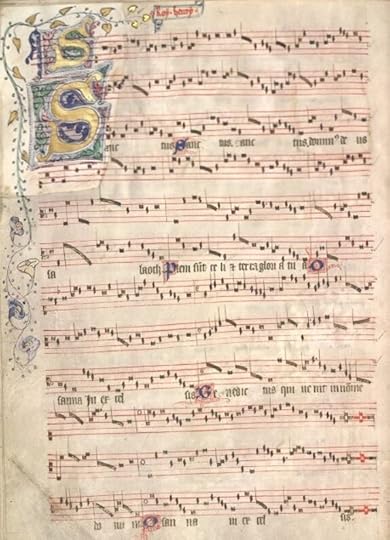
p 161 of the Old Hall Manuscript, ~1410-1420
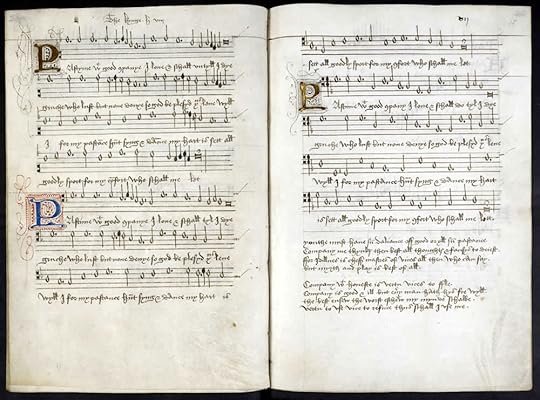
The Henry VIII Songbook from ~1518.
"Twenty songs and thirteen instrumental pieces" attributed to "The Kynge H. viij" were compiled in the 1518 Henry VIII Songbook, which also included 76 pieces from other court musicians. Although some of the songs by Henry were arrangements of previously existing pieces, many of them are originals.
However, despite popular belief, Henry VIII did NOT write Greensleeves, which was partly based off of a romanesca, an Italian style of musical composition that did not reach England until after Henry VIII's death.
His daughter Elizabeth I was also a composer, although only one of her songs has survived to this day. This paper explores Henry and Elizabeth's compositions and musical education more in depth.
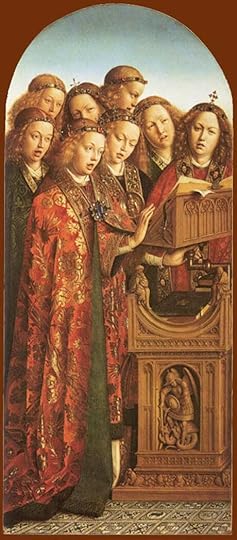
Detail of the Ghent Altarpiece, Chapel Cathedral of Saint Bavo, Ghent, Belgium, Hubert and Jan Von Eyck
What's more, how did the song become popular? Did the King simply compose it, order every musician to have a copy of the manuscript and play it a certain amount of times a week? How did compositions from the royal court reach the masses?
- Although Henry had at least 60 musicians on his staff when he died, he couldn't possibly have ordered every musician in the country to play it, and the fact that not of all his songs were big hits seems to support this. Based on the information I've already shared about the Henry VIII songbook, it seems likely that "Pastime with Good Company" was distributed around the country in written form. There are records indicating that it was actually popular in Scotland and even long after his death.
Finally, say I am at the median of medieval class society - your average joe - what would have been my likely interaction with this song, if any? Was music mostly an indulgence of the elites at that time?
Everything I've read and referenced throughout this answer so far indicates that music was popular at every level of society, although the level of musical education and the specific form of the music, of course, varied. While "Pastimes" may have been performed in Henry VIII's court by 60 musicians and a choir in four part harmony, it was also likely performed in villages and at fairs by solo minstrels accompanied only by a single instrument or small groups.
In addition, under Henry VIII, with further development of the printing press, more and more printers began to publish music, often in the form of single sheet broadsides that could be sold very cheaply.
(SIDENOTE: jstor is now offering free accounts that allow you to read up to 100 articles a month, due to COVID-19 shutting down all the libraries. This makes me SO HAPPY)
These single sheets continued in popularity through to Elizabethan times, and even make an appearance in Shakespeare's "Winter's Tale," Act 4, Scene 4 - in which the con artist/minstrel Autolycus touts various ridiculous sounding ballads for sale at a local festival.
And even apart from the printing press, people regularly wrote down any songs they liked and passed them around, much as you might have written down song lyrics to songs you heard on the radio so you and your friends could sing them together later back in the 80s or earlier. :)
FINAL NOTE: The best thing I learned while researching this whole answer was that Henry VIII and Cardinal Wolsey had rival in-house choirs and had a competition to see who had the best one. When Cardinal Wolsey’s choir won, he wisely “gave” one of his best singers to the king for his choir.
Hope y’all enjoyed that!
May 4, 2020
15 Things I Learned from Six UK Tour Alternate/Dance Captain Harriet Watson's Workshop and Q&A
All My Six Posts!
I'm Doing 8 Virtual Dance Workshops and Q&As with Different Six Cast Members!
18 Things I Learned from Six Alternate Vicki Manser's Dance Workshop/Q&A
15 Things I Learned from Six UK Tour Alternate/Dance Captain Harriet Watson’s Workshop/Q&A
14 Things I Learned from Six Alternate/Dance Captain Collette Guitart’s Workshop/Q&A
12 Things I Learned from Six UK Tour Alternate Jen Caldwell’s Workshop/Q&A
Details from Six Costumer Gabriella Slade’s Instagram Takeover
Six the Musical Wives 1-3: Historical and Modern Costume Inspirations
Six the Musical Wives 4-6: Historical and Modern Costume Inspirations
The Early Costumes of Six the Musical: From Edinburgh to Cambridge to London
Updated Six the Musical Costumes for Broadway!
The Alternate Costumes of Six the Musical
The Shoes of Six the Musical
The Ladies in Waiting of Six: Historical Inspirations and Costumes
The Tudor Fashion Elements of the Costumes in Six (with Painting References)
How the Six Alternates Change Their Styling for Each Queen
Last Saturday, I participated in a virtual dance workshop and Q&A with Six UK & Ireland Tour alternate and dance captain Harriet Watson! The event was hosted by Theatre Fan Parties and I really enjoyed it! Honestly, when I signed up, I kind of thought that there would be like 100 participants, but there were only around 20 and it made for a really lovely, intimate setting. Harriet was super sweet and lovely and encouraging, and I had a great time!
I liked it so much that immediately afterward, I went and signed up for a class in a few weeks with Colette Guitart, the dance captain and one of the Six alternates in the West End production (of course, I later realized that this particular workshop will happen at 5 am my time…ouch, but worth it!).
I frankly have zero dance training except for the few moves I learned in color guard in high school and some ballroom dance classes in college and shortly after. I definitely haven’t taken any dance classes since…2012 at latest. I’m not a very coordinated person, okay? But Harriet was a wonderful teacher and I managed to follow along pretty well despite all that.

Harriet posing nicely when Tyler (the owner of Theatre Fan Parties) asked her to. My face is awkwardly in the upper right because Zoom.
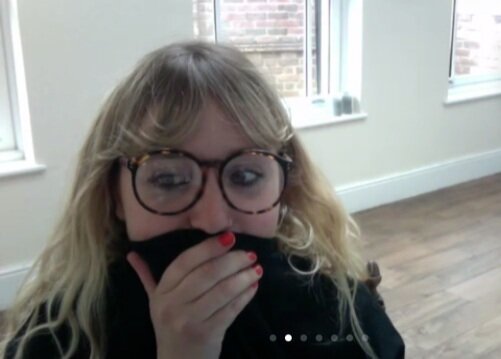
Harriet adorably hiding her face when someone asked her a question she wasn’t sure she was allowed to answer.
After a quick, efficient warmup, Harriet taught us the dance part to Get Down that starts at “I’m the queen of the castle, get down you dirty rascal” and goes through the next phrase through to “cause I’m the queen of the castle.” The individual moves weren’t too hard, but they were VERY FAST with the music, and I’m pretty sure I just flopped around like a fish. Harriet was constantly checking the chat for any questions about individual moves and interacted with everyone, complimenting people when they were killing moves and generally just being a wonderful person.
I did a lot better with the “Six” dance which she ended with, which was much easier. I actually still remember all the moves (Get down was gone…pretty much immediately from my mind, let’s just be honest). Harriet ended up taking a video of all of us doing the dance together and posted it to her Instagram stories, which was really cool! She also commented on my Instagram later about it, which was lovely.
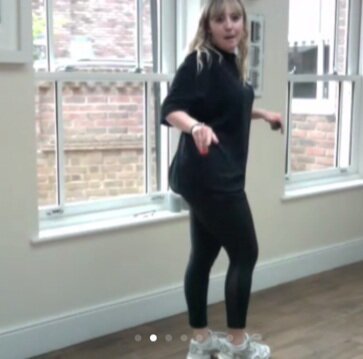
Demonstrating a dance move
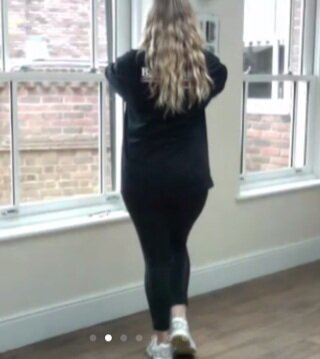
Demonstrating a dance move from “Six.”
After the dance workshop portion was over, Harriet answered questions from the attendees! She started out with a general explanation of how she got involved the show. I took a ton of notes, but I’m sure they aren’t perfect quotes (I was typing quickly but my cats decided that RIGHT THEN was the perfect time to start exploring the magical space behind my computer monitors and distracted me), so just expect that these are paraphrased quotes.
1. How she got in the show: She was initially up for Boleyn and Aragon – Maddie beat her out (presumably Maddison Bulleyment, who’s Anne Boleyn for the UK Tour cast).
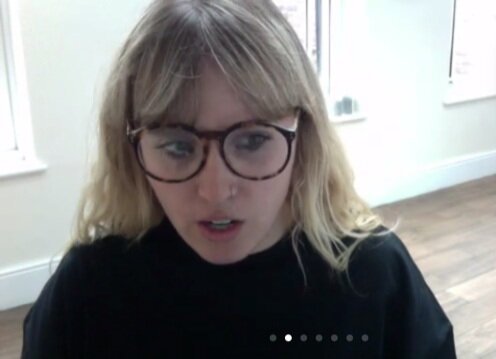
Answering all the questions
She went to the open call for the show (handled by Pearson casting, who she described as “lovely and incredible”) and said there were probably 3,000 people there. The first day of auditions was just dance – choreography allllll dayyyy. When they got to the singing part of auditions, she sang jessie j’s mama knows best, then a song by adele, and beyonce’s halo.
After that she had a group audition, where a group would go in and each person would sing 5 songs in a row with all the other auditionees just watching. She saw Jenn (presumably Jennifer Caldwell, another of the UK Tour alternates) audition at that time.
She had a few more auditions after that, where they swapped around a ton of girls to see who worked well together. Apparently when she was offered the job, someone called and asked “what queen do you want to be.” (she later clarified that she didn’t actually get to choose which queens she was first cover for).
2. Favorite queen to play: Boleyn – she’s not my first cover but I love her because I get to be naughty on stage. [Harriet’s first covers are Jane Seymour and Catherine Parr]
3. Training: She trained at a college in Nottingham called MADD. She specifically noted that she didn’t get an agent from her agent showcasing in college and graduated with no idea where she fit into musical theater.
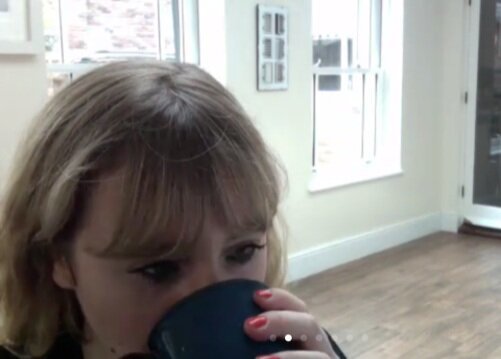
Drinking the tea
6 years after that, she did a LOT of workshops in London – she’d go for a week or a day. Her main training was from workshops – she got her basics from college but she didn’t know what songs to sing, what she was doing – workshops were the best things for her. That’s where she got her agent and really learned her stuff.
4. Her Personal Pop Inspirations for each Queen:
Seymour – Madonna
Parr – Alicia keys
Howard – Britney
Aragon – beyonce
She also mentioned Ariana grande and asked who was that – howard???
5. How important is being a good dancer in musical theater? It depends what type of theater you’re going into. If you want to do 42nd street or fame – you have to be a good dancer. You’ve got to sell it –
6. Beginner dance class suggestions: BALLET is the first dance class you really need to do – it’s boring but you need the conditioning
7. Hardest choreography in the show: “for me, all you want to do” It’s not the hardest – but it’s a slog – you have to stay centered and balanced and it’s SO long
She confirmed that she’s been signed up as an alternate again for the next tour!
8. Do you have to train differently to be a swing? Yes, for tech rehearsals before the show, she has to run the show from top to bottom on her own with the directors. She has a swing bible – that jenn [caldwell] made her – she listens to her harmonies and goes through her swing bible the whole time.
She highly suggested that if you want to be a swing or an alternate – start practicing NOW – start watching people’s tracks – you want to think about how to do the show as that person. I had never done it before – I never got trained in it in school – I cried so many days – jenn Caldwell saved me. Try to pick out harmonies for all the different performers. I didn’t get harmony training ever, and it’s the hardest thing I’ve ever done.
9. Favorite tour venue: I loved Glasgow!
She conferred with Gemma, who she referred to as “head of sound” and was in the room with her, to remember exactly which location she was thinking of. She ended up asking the crowd where she went on for Boleyn and a chorus of “Salfords!” came through on the chat.
Where I was on for Boleyn – Salford! That sing a long was the most incredible experience of my life – everyone was sobbing and crying.
10. Do you get to choose your first covers? She said no. She said at first that she was cast as first cover for cleves and then cassie took it away. (said with much affection!)
11. Does she stay on the same harmonies or does she switch around with each queen? They switch everyone around – Boleyn’s on the top harmony lines at first. Howard starts low and then she hits top Gs. Alternates have to know all the harmony lines – it’s definitely the hardest bit about the show.
“Can we get a petition for alternates to have one harmony line? That would make my life very easy.”

Answering even more questions.
12. Rehearsal process: Jenn and I got called in a little early and got to train with the town alternates – Colette [Guitart] and such. Rehearsals were very long - she said it’s sounds so cliché, but when you really do something you really love, I could do something from 6 in the morning to 12 at night. You just did number by number day by day. We’d tap in or tap out – for the alternates – and when I felt ready, I would tap in for lauren or whatever –
She doesn’t know if she’s allowed to say anything about tours for next year. When corona is over – doesn’t know what she can say so she just covered her mouth with her shirt.
13. Dance Captain: She did not specifically audition for dance captain but was offered it in the contract she was given as the alternate. Carrie [Carrie-Anne Ingrouille, the choreographer for Six] is in every audition to watch. They also look at your ability to converse and be kind to people.
Jobs of dance captain – she goes in an hour and a half earlier – warms up all the girls up for half an hour – does notes with them – she does a show watch twice a week to just keep the show as it was when it left rehearsals.
When we went to blue peter – went along to make sure they’re all in the correct position. Photo shoots where they’re all posing – making sure they’re all in the right position –
If they have any concerns, they can take them to me and I can get them to the director – it’s my favorite job – be the advocate for the girls really
14. How they found out about the remainder of the UK tour getting postponed due to COVID-19: Basically they were traveling to brighton and they got the call that the theater was closed – and just had to turn around. And that was that.
She said that she wasn’t doing stage door for like 2 weeks before they closed because she was scared of getting sick
15. Dressing rooms?: She always shares her dressing room with the other alternates, Jenn Caldwell and Cassie Lee.
Six UK Tour Alternate/Dance Captain Harriet Watson's Virtual Workshop!
Last Saturday, I participated in a virtual dance workshop and Q&A with Six UK & Ireland Tour alternate and dance captain Harriet Watson! The event was hosted by Theatre Fan Parties and I really enjoyed it! Honestly, when I signed up, I kind of thought that there would be like 100 participants, but there were only around 20 and it made for a really lovely, intimate setting. Harriet was super sweet and lovely and encouraging, and I had a great time!
I liked it so much that immediately afterward, I went and signed up for a class in a few weeks with Colette Guitart, the dance captain and one of the Six alternates in the West End production (of course, I later realized that this particular workshop will happen at 5 am my time…ouch, but worth it!).
I frankly have zero dance training except for the few moves I learned in color guard in high school and some ballroom dance classes in college and shortly after. I definitely haven’t taken any dance classes since…2012 at latest. I’m not a very coordinated person, okay? But Harriet was a wonderful teacher and I managed to follow along pretty well despite all that.

Harriet posing nicely when Tyler (the owner of Theatre Fan Parties) asked her to. My face is awkwardly in the upper right because Zoom.

Harriet adorably hiding her face when someone asked her a question she wasn’t sure she was allowed to answer.
After a quick, efficient warmup, Harriet taught us the dance part to Get Down that starts at “I’m the queen of the castle, get down you dirty rascal” and goes through the next phrase through to “cause I’m the queen of the castle.” The individual moves weren’t too hard, but they were VERY FAST with the music, and I’m pretty sure I just flopped around like a fish. Harriet was constantly checking the chat for any questions about individual moves and interacted with everyone, complimenting people when they were killing moves and generally just being a wonderful person.
I did a lot better with the “Six” dance which she ended with, which was much easier. I actually still remember all the moves (Get down was gone…pretty much immediately from my mind, let’s just be honest). Harriet ended up taking a video of all of us doing the dance together and posted it to her Instagram stories, which was really cool! She also commented on my Instagram later about it, which was lovely.

Demonstrating a dance move

Demonstrating a dance move from “Six.”

Drinking the tea

Answering all the questions

Answering even more questions.
After the dance workshop portion was over, Harriet answered questions from the attendees! She started out with a general explanation of how she got involved the show. I took a ton of notes, but I’m sure they aren’t perfect quotes (I was typing quickly but my cats decided that RIGHT THEN was the perfect time to start exploring the magical space behind my computer monitors and distracted me), so just expect that these are paraphrased quotes.
How she got in the show: She was initially up for Boleyn and Aragon – Maddie beat her out (presumably Maddison Bulleyment, who’s Anne Boleyn for the UK Tour cast).
She went to the open call for the show (handled by Pearson casting, who she described as “lovely and incredible”) and said there were probably 3,000 people there. The first day of auditions was just dance – choreography allllll dayyyy. When they got to the singing part of auditions, she sang jessie j’s mama knows best, then a song by adele, and beyonce’s halo.
After that she had a group audition, where a group would go in and each person would sing 5 songs in a row with all the other auditionees just watching. She saw Jenn (presumably Jennifer Caldwell, another of the UK Tour alternates) audition at that time.
She had a few more auditions after that, where they swapped around a ton of girls to see who worked well together. Apparently when she was offered the job, someone called and asked “what queen do you want to be.” (she later clarified that she didn’t actually get to choose which queens she was first cover for).
Favorite queen to play: Boleyn – she’s not my first cover but I love her because I get to be naughty on stage. [Harriet’s first covers are Jane Seymour and Catherine Parr]
Training: She trained at a college in Nottingham called MADD. She specifically noted that she didn’t get an agent from her agent showcasing in college and graduated with no idea where she fit into musical theater.
6 years after that, she did a LOT of workshops in London – she’d go for a week or a day. Her main training was from workshops – she got her basics from college but she didn’t know what songs to sing, what she was doing – workshops were the best things for her. That’s where she got her agent and really learned her stuff.
Her Personal Pop Inspirations for each Queen:
Seymour – Madonna
Parr – Alicia keys
Howard – Britney
Aragon – beyonce
She also mentioned Ariana grande and asked who was that – howard???
How important is being a good dancer in musical theater? It depends what type of theater you’re going into. If you want to do 42nd street or fame – you have to be a good dancer. You’ve got to sell it –
Beginner dance class suggestions: BALLET is the first dance class you really need to do – it’s boring but you need the conditioning
Hardest choreography in the show: “for me, all you want to do” It’s not the hardest – but it’s a slog – you have to stay centered and balanced and it’s SO long
She confirmed that she’s been signed up as an alternate again for the next tour!
Do you have to train differently to be a swing? Yes, for tech rehearsals before the show, she has to run the show from top to bottom on her own with the directors. She has a swing bible – that jenn [caldwell] made her – she listens to her harmonies and goes through her swing bible the whole time.
She highly suggested that if you want to be a swing or an alternate – start practicing NOW – start watching people’s tracks – you want to think about how to do the show as that person. I had never done it before – I never got trained in it in school – I cried so many days – jenn Caldwell saved me. Try to pick out harmonies for all the different performers. I didn’t get harmony training ever, and it’s the hardest thing I’ve ever done.
Favorite tour venue: I loved Glasgow!
She conferred with Gemma, who she referred to as “head of sound” and was in the room with her, to remember exactly which location she was thinking of. She ended up asking the crowd where she went on for Boleyn and a chorus of “Salfords!” came through on the chat.
Where I was on for Boleyn – Salford! That sing a long was the most incredible experience of my life – everyone was sobbing and crying.
Do you get to choose your first covers? She said no. She said at first that she was cast as first cover for cleves and then cassie took it away. (said with much affection!)
Does she stay on the same harmonies or does she switch around with each queen? They switch everyone around – Boleyn’s on the top harmony lines at first. Howard starts low and then she hits top Gs. Alternates have to know all the harmony lines – it’s definitely the hardest bit about the show.
“Can we get a petition for alternates to have one harmony line? That would make my life very easy.”
Rehearsal process: Jenn and I got called in a little early and got to train with the town alternates – Colette [Guitart] and such. Rehearsals were very long - she said it’s sounds so cliché, but when you really do something you really love, I could do something from 6 in the morning to 12 at night. You just did number by number day by day. We’d tap in or tap out – for the alternates – and when I felt ready, I would tap in for lauren or whatever –
She doesn’t know if she’s allowed to say anything about tours for next year. When corona is over – doesn’t know what she can say so she just covered her mouth with her shirt.
Dance Captain: She did not specifically audition for dance captain but was offered it in the contract she was given as the alternate. Carrie [Carrie-Anne Ingrouille, the choreographer for Six] is in every audition to watch. They also look at your ability to converse and be kind to people.
Jobs of dance captain – she goes in an hour and a half earlier – warms up all the girls up for half an hour – does notes with them – she does a show watch twice a week to just keep the show as it was when it left rehearsals.
When we went to blue peter – went along to make sure they’re all in the correct position. Photo shoots where they’re all posing – making sure they’re all in the right position –
If they have any concerns, they can take them to me and I can get them to the director – it’s my favorite job – be the advocate for the girls really
How they found out about the remainder of the UK tour getting postponed due to COVID-19: Basically they were traveling to brighton and they got the call that the theater was closed – and just had to turn around. And that was that.
She said that she wasn’t doing stage door for like 2 weeks before they closed because she was scared of getting sick
Dressing rooms?: She always shares her dressing room with the other alternates, Jenn Caldwell and Cassie Lee.
Notes from Six UK Tour Alternate/Dance Captain Harriet Watson's Virtual Workshop!
Last Saturday, I participated in a virtual dance workshop and Q&A with Six UK & Ireland Tour alternate and dance captain Harriet Watson! The event was hosted by Theatre Fan Parties and I really enjoyed it! Honestly, when I signed up, I kind of thought that there would be like 100 participants, but there were only around 20 and it made for a really lovely, intimate setting. Harriet was super sweet and lovely and encouraging, and I had a great time!
I liked it so much that immediately afterward, I went and signed up for a class in a few weeks with Colette Guitart, the dance captain and one of the Six alternates in the West End production (of course, I later realized that this particular workshop will happen at 5 am my time…ouch, but worth it!).
I frankly have zero dance training except for the few moves I learned in color guard in high school and some ballroom dance classes in college and shortly after. I definitely haven’t taken any dance classes since…2012 at latest. I’m not a very coordinated person, okay? But Harriet was a wonderful teacher and I managed to follow along pretty well despite all that.

Harriet posing nicely when Tyler (the owner of Theatre Fan Parties) asked her to. My face is awkwardly in the upper right because Zoom.

Harriet adorably hiding her face when someone asked her a question she wasn’t sure she was allowed to answer.
After a quick, efficient warmup, Harriet taught us the dance part to Get Down that starts at “I’m the queen of the castle, get down you dirty rascal” and goes through the next phrase through to “cause I’m the queen of the castle.” The individual moves weren’t too hard, but they were VERY FAST with the music, and I’m pretty sure I just flopped around like a fish. Harriet was constantly checking the chat for any questions about individual moves and interacted with everyone, complimenting people when they were killing moves and generally just being a wonderful person.
I did a lot better with the “Six” dance which she ended with, which was much easier. I actually still remember all the moves (Get down was gone…pretty much immediately from my mind, let’s just be honest). Harriet ended up taking a video of all of us doing the dance together and posted it to her Instagram stories, which was really cool! She also commented on my Instagram later about it, which was lovely.

Demonstrating a dance move

Demonstrating a dance move from “Six.”

Drinking the tea

Answering all the questions

Answering even more questions.
After the dance workshop portion was over, Harriet answered questions from the attendees! She started out with a general explanation of how she got involved the show. I took a ton of notes, but I’m sure they aren’t perfect quotes (I was typing quickly but my cats decided that RIGHT THEN was the perfect time to start exploring the magical space behind my computer monitors and distracted me), so just expect that these are paraphrased quotes.
How she got in the show: She was initially up for Boleyn and Aragon – Maddie beat her out (presumably Maddison Bulleyment, who’s Anne Boleyn for the UK Tour cast).
She went to the open call for the show (handled by Pearson casting, who she described as “lovely and incredible”) and said there were probably 3,000 people there. The first day of auditions was just dance – choreography allllll dayyyy. When they got to the singing part of auditions, she sang jessie j’s mama knows best, then a song by adele, and beyonce’s halo.
After that she had a group audition, where a group would go in and each person would sing 5 songs in a row with all the other auditionees just watching. She saw Jenn (presumably Jennifer Caldwell, another of the UK Tour alternates) audition at that time.
She had a few more auditions after that, where they swapped around a ton of girls to see who worked well together. Apparently when she was offered the job, someone called and asked “what queen do you want to be.” (she later clarified that she didn’t actually get to choose which queens she was first cover for).
Favorite queen to play: Boleyn – she’s not my first cover but I love her because I get to be naughty on stage. [Harriet’s first covers are Jane Seymour and Catherine Parr]
Training: She trained at a college in Nottingham called MADD. She specifically noted that she didn’t get an agent from her agent showcasing in college and graduated with no idea where she fit into musical theater.
6 years after that, she did a LOT of workshops in London – she’d go for a week or a day. Her main training was from workshops – she got her basics from college but she didn’t know what songs to sing, what she was doing – workshops were the best things for her. That’s where she got her agent and really learned her stuff.
Her Personal Pop Inspirations for each Queen:
Seymour – Madonna
Parr – Alicia keys
Howard – Britney
Aragon – beyonce
She also mentioned Ariana grande and asked who was that – howard???
How important is being a good dancer in musical theater? It depends what type of theater you’re going into. If you want to do 42nd street or fame – you have to be a good dancer. You’ve got to sell it –
Beginner dance class suggestions: BALLET is the first dance class you really need to do – it’s boring but you need the conditioning
Hardest choreography in the show: “for me, all you want to do” It’s not the hardest – but it’s a slog – you have to stay centered and balanced and it’s SO long
She confirmed that she’s been signed up as an alternate again for the next tour!
Do you have to train differently to be a swing? Yes, for tech rehearsals before the show, she has to run the show from top to bottom on her own with the directors. She has a swing bible – that jenn [caldwell] made her – she listens to her harmonies and goes through her swing bible the whole time.
She highly suggested that if you want to be a swing or an alternate – start practicing NOW – start watching people’s tracks – you want to think about how to do the show as that person. I had never done it before – I never got trained in it in school – I cried so many days – jenn Caldwell saved me. Try to pick out harmonies for all the different performers. I didn’t get harmony training ever, and it’s the hardest thing I’ve ever done.
Favorite tour venue: I loved Glasgow!
She conferred with Gemma, who she referred to as “head of sound” and was in the room with her, to remember exactly which location she was thinking of. She ended up asking the crowd where she went on for Boleyn and a chorus of “Salfords!” came through on the chat.
Where I was on for Boleyn – Salford! That sing a long was the most incredible experience of my life – everyone was sobbing and crying.
Do you get to choose your first covers? She said no. She said at first that she was cast as first cover for cleves and then cassie took it away. (said with much affection!)
Does she stay on the same harmonies or does she switch around with each queen? They switch everyone around – Boleyn’s on the top harmony lines at first. Howard starts low and then she hits top Gs. Alternates have to know all the harmony lines – it’s definitely the hardest bit about the show.
“Can we get a petition for alternates to have one harmony line? That would make my life very easy.”
Rehearsal process: Jenn and I got called in a little early and got to train with the town alternates – Colette [Guitart] and such. Rehearsals were very long - she said it’s sounds so cliché, but when you really do something you really love, I could do something from 6 in the morning to 12 at night. You just did number by number day by day. We’d tap in or tap out – for the alternates – and when I felt ready, I would tap in for lauren or whatever –
She doesn’t know if she’s allowed to say anything about tours for next year. When corona is over – doesn’t know what she can say so she just covered her mouth with her shirt.
Dance Captain: She did not specifically audition for dance captain but was offered it in the contract she was given as the alternate. Carrie [Carrie-Anne Ingrouille, the choreographer for Six] is in every audition to watch. They also look at your ability to converse and be kind to people.
Jobs of dance captain – she goes in an hour and a half earlier – warms up all the girls up for half an hour – does notes with them – she does a show watch twice a week to just keep the show as it was when it left rehearsals.
When we went to blue peter – went along to make sure they’re all in the correct position. Photo shoots where they’re all posing – making sure they’re all in the right position –
If they have any concerns, they can take them to me and I can get them to the director – it’s my favorite job – be the advocate for the girls really
How they found out about the remainder of the UK tour getting postponed due to COVID-19: Basically they were traveling to brighton and they got the call that the theater was closed – and just had to turn around. And that was that.
She said that she wasn’t doing stage door for like 2 weeks before they closed because she was scared of getting sick
Dressing rooms?: She always shares her dressing room with the other alternates, Jenn Caldwell and Cassie Lee.
April 25, 2020
Disney Crowns and Tiaras: Historical and Modern Inspirations (Part I)
I’m going through all the crowns and tiaras shown in Disney animated films, analyzing their historical inspirations, and comparing them to actual crowns and tiaras worn by royals around the world! I’m not definitively saying that these original crowns/tiaras WERE inspirations for those in the films, but am just looking for similarities. There are so many though, that I’m just going to try to talk about 5 or so in each post.
Today, I’m going to look at crowns and tiaras in Snow White and the Seven Dwarfs, the various Alice in Wonderland films, the various Sleeping Beauty/Maleficent films, Robin Hood, and the Great Mouse Detective.
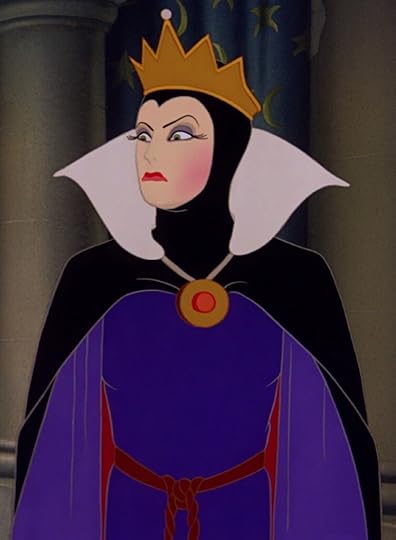
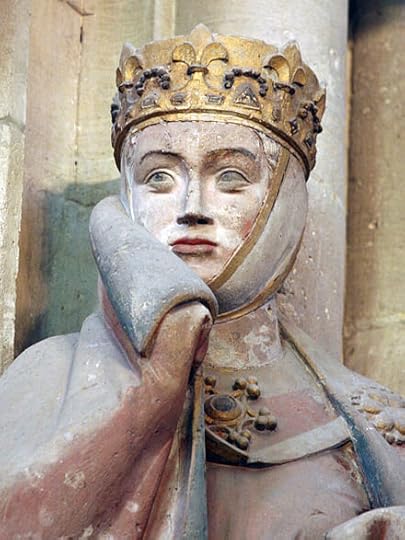
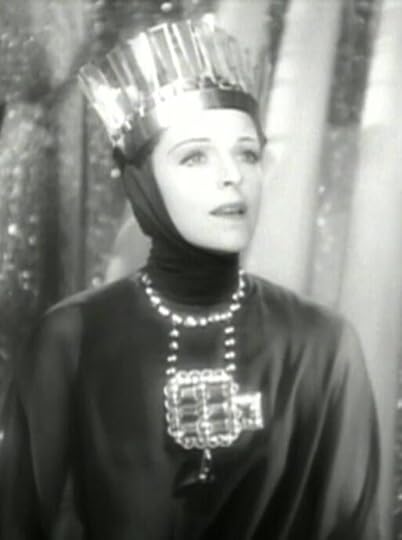
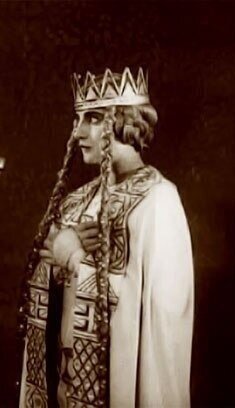
(L to R): Evil Queen , “Snow White and the Seven Dwarfs” - 1937; Uta von Ballenstedt statue - ~1044; She Who Must be Obeyed, “She” - 1935; and Princess Kriemhild, “Die Nibelungen” - 1924.
Evil Queen (Snow White and the Seven Dwarfs, 1937) - Only one character in the first full-length Disney animated film wears a crown: The Evil Queen. She sports a spiky gold “open” crown, with only a single pearl at the top. Keep an eye out for this style of crown, because we’ll see variations on it many more times in other Disney movies.
The queen’s look was mostly inspired by a statue of Uta von Ballenstedt at the Naumburg Cathedral in Naumburg, Germany. Uta was supposedly the most beautiful woman in medieval Germany. Many elements of the queen’s costume, including her headcovering, high cape, facial expression, and large pendant necklace are drawn from this. The character known as She Who Must Be Obeyed in the 1935 film “She” also is a likely inspiration for Snow White’s queen. Her crown, however, though gold like Uta’s and tall like the character in “She,” looks to be more inspired by Princess Kriemhild in the 1924 silent film “Die Nibelungen.”
I only found one actual royal crown with large spikes on it- the Danish king Christian IV’s coronation crown, made in ~1595 (below left, on the top). It does look pretty similar to the Eastern crown (also known as the Antique crown) in heraldry, except for the taller central front spike and the pearl at the top (below left, on the bottom).
It does have some similarities to the Diamond Festoon Necklace Tiara as well! (below center)
The Evil Queen’s tiara is much simpler than any of these real crowns and appears to be just solid gold, with only a single pearl on the top. Although the crown was probably designed this way to make the animation easier, historically, relatively simple gem-less metal tiaras became popular in the mid-1700s and through to the Victorian age. These cut steel tiaras were a less expensive way for women to obtain sparkly jewelry when they couldn’t afford diamonds or other precious gems. These were still time-consuming and beautiful though, as they were specifically cut and carved to shimmer as a diamond would. You can see an example below right.
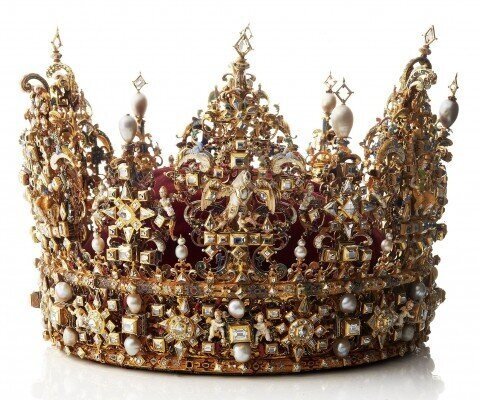
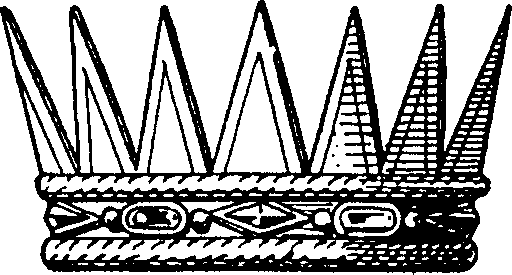
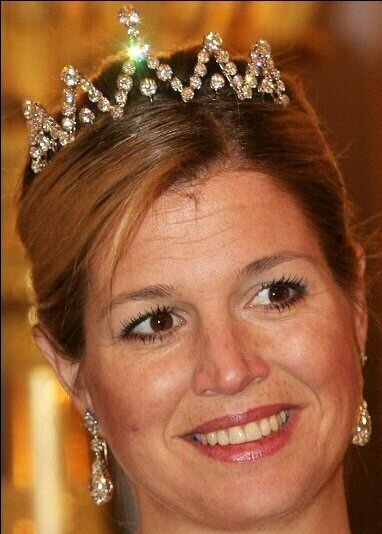
Dutch Diamond Festoon Necklace Tiara - 1889
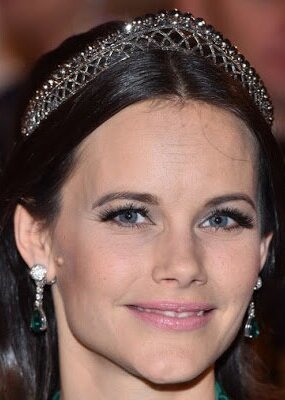
Swedish Cut Steel Bandeau - ~early 1800s
Notes:
Quick Reminder:
Crown – A full circle headpiece with an emblematic function associated with sovereignty and nobility.
Tiara – An open semi-circular headpiece that usually does not encircle the head, but perches on the top. Worn by royal and noble women at white tie events, formal state occasions, and weddings.
Open crowns, without bands overhead, are the oldest crowns and leave the wearer’s head open to the sky. The vast majority of crowns in Disney animated films appear to be open. However, historically, closed crowns became the dominant design in sovereignty headgear in the middle ages and are the dominant type today.
Although the Evil Queen wears her crown throughout the movie (except when she’s disguised as an old woman), in real life, crowns would only be worn on special occasions, such as at coronations or upon other state occasions.
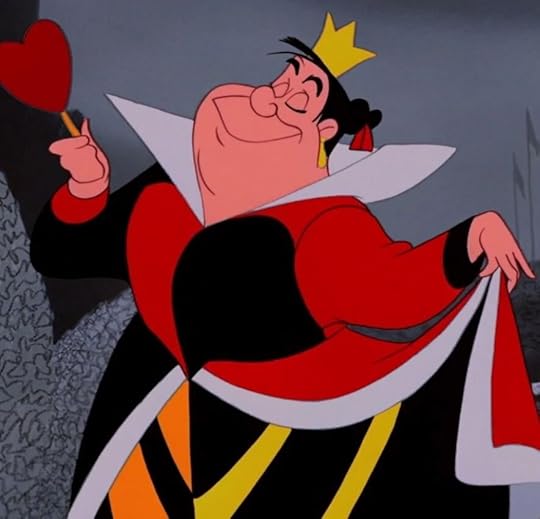
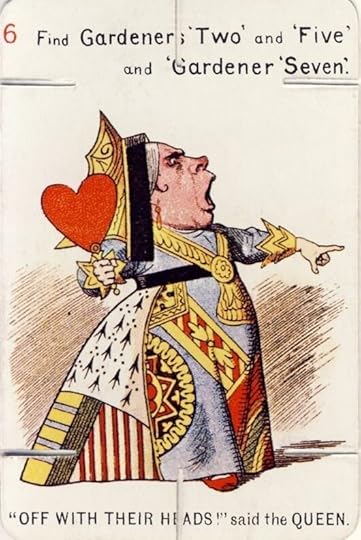
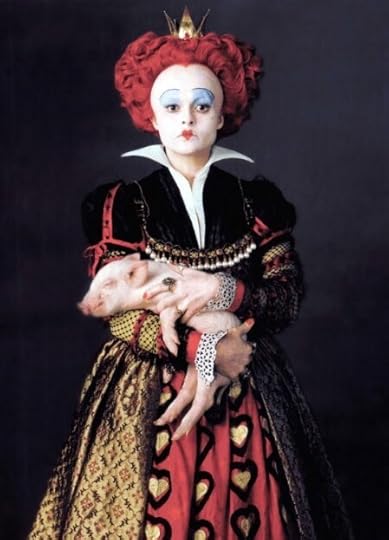
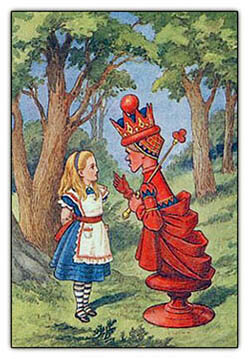
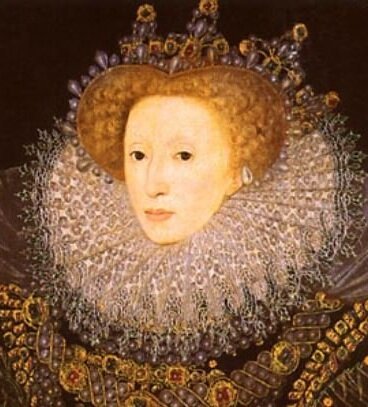
L to R: Queen of Hearts, “Alice in Wonderland” film - 1951; The Queen of Hearts, “Alice in Wonderland” book - 1865 (John Tenniel); Red Queen, “Alice in Wonderland” film - 2010; The Red Queen, “Through the Looking Glass” book -1871 (John Tenniel); and Elizabeth I - 1585 (portrait by Nicholas Hilliard).
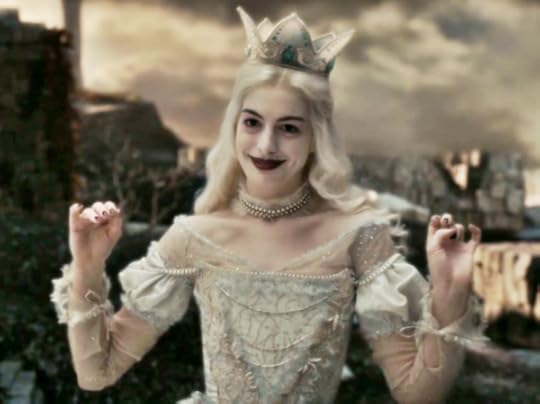
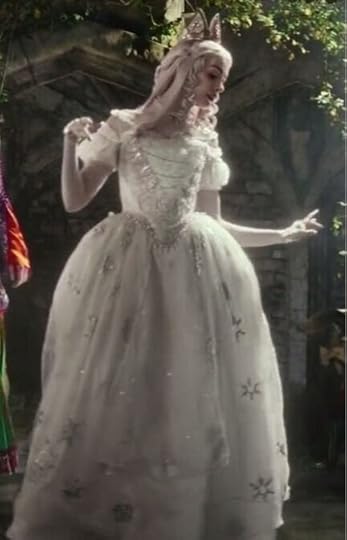
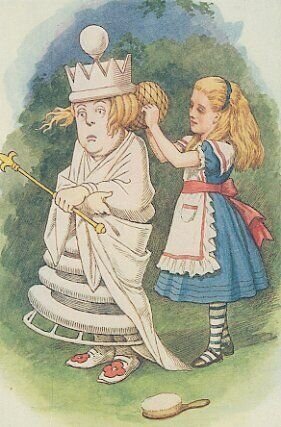
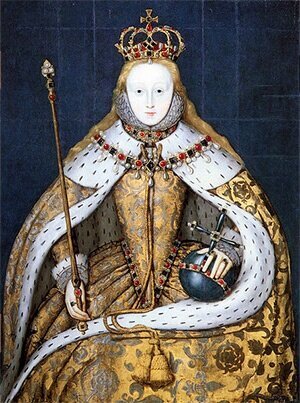
L to R: The White Queen, “Alice in Wonderland” film - 2010; The White Queen, “Alice Through the Looking Glass” film - 2016; The White Queen, “Through the Looking Glass” book - 1871 (John Tenniel); and Elizabeth I, coronation portrait - 1559 (unknown artist).
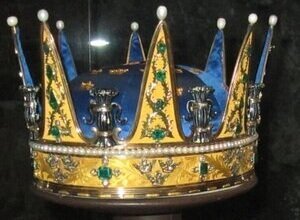
Swedish Ducal Coronet
The Queen of Hearts/Red Queen; The White Queen - All of the Queens in the Alice in Wonderland (both animated and live action) movies wear spiky crowns that are relatively small and sit on top of their head instead of encircling them. This reminds me a bit of a Swedish ducal coronet (right).
In the book “Alice in Wonderland” (1865), the Queen of Hearts is drawn as a playing card character and sports a gable hood rather than a crown. She’s actually a totally different character from the Red Queen, who appears along with the White Queen in the book “Through the Looking-Glass” (1871), but the characters are commonly confused or melded together like in the live-action film series. The red and white queen characters in the books are clearly based off of chess pieces, which explains the continued spiky crown theme.
What’s interesting is that both characters in the live action films have some similarities to Elizabeth I at different times in her life. The Red Queen’s red hair, the shape of her updo, and her use of white makeup all over her face is clearly based off of Elizabeth I’s later looks. However, the white queen’s pallor and long flowing locks have some similarities to the young Elizabeth I’s look at her coronation. Both queens’ costumes have some Tudor elements to them, but neither crown looks like the Tudor crown (shown in Elizabeth’s coronation portrait), apart from the general “perched on top of head” appearance.
Notes:
Coronet – Small crown generally worn by dukes and earls at coronations, and often worn by princes/princesses at formal events. These are standardized for various peers, with different designs for each rank (e.g., Duke, Marquess, Earl, Viscount, Baron).
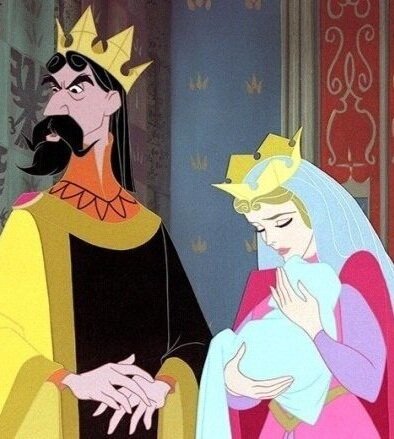
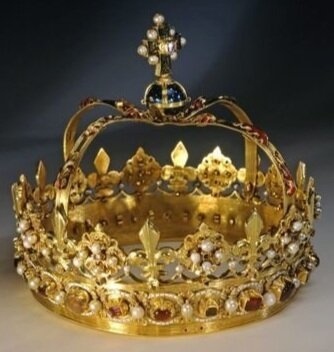
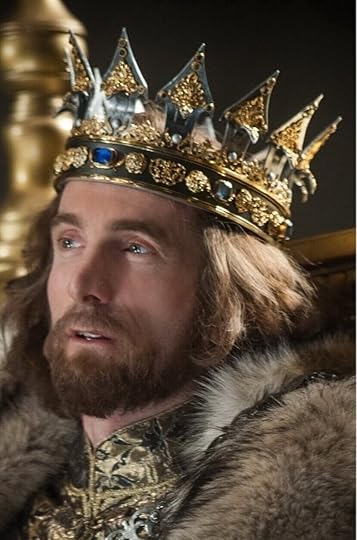
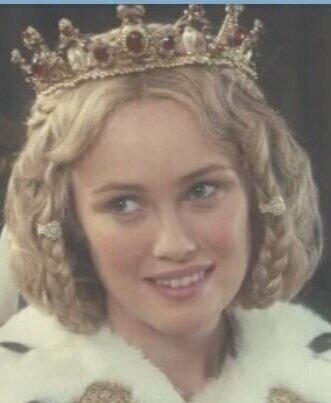
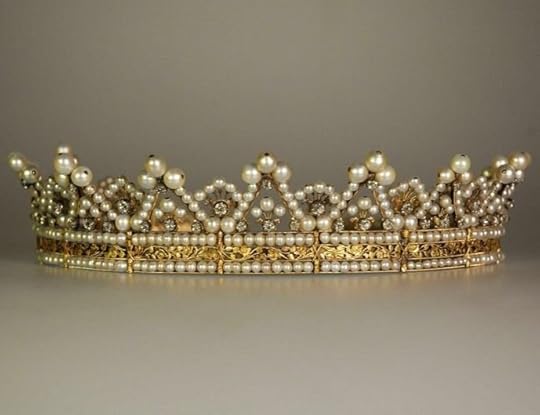
L to R: King Stefan and Queen Leah, “Sleeping Beauty” - 1959; Crown of Scotland (sans cap); King Stefan, “Maleficent” - 2014; Queen Leila, “Maleficent” - 2014; Stéphanie de Beauharnais, Grand Duchess of Baden's pearl-and-diamond tiara - 1830.
King Stefan (1959) and Queen Leah (1959) - Both of these crowns resemble the crown of Scotland without its velvet cap, minus the top arches.
King Stefan (2014) - This crown is very similar to the Swedish Ducal Coronet I talked about previously under the Red Queen/White Queen section, only larger, fitting around his entire head instead of perching on top like with the Alice Queens.
Queen Leila (2014) The shape of her crown reminds me of the pearl-and-diamond tiara of Stéphanie de Beauharnais, Grand Duchess of Baden, made circa 1830.
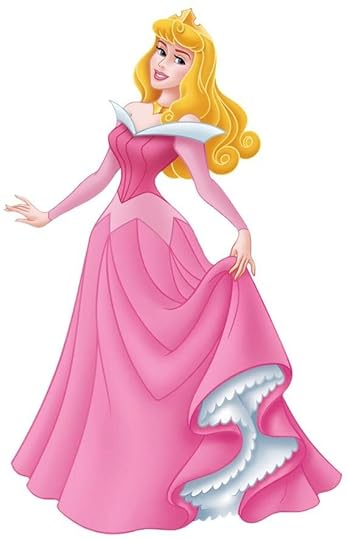
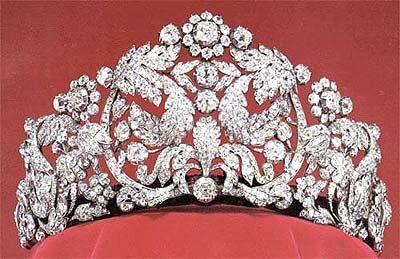
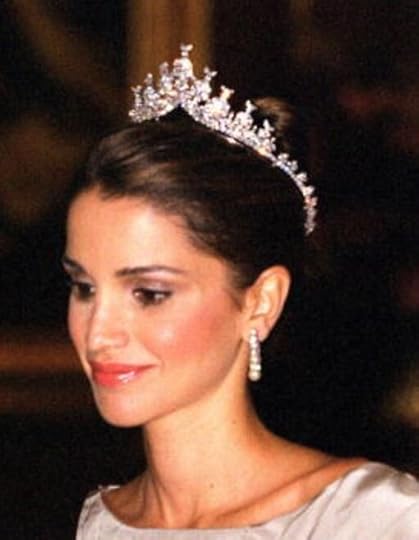
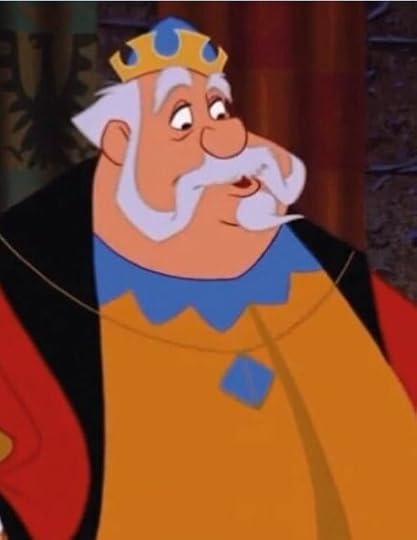
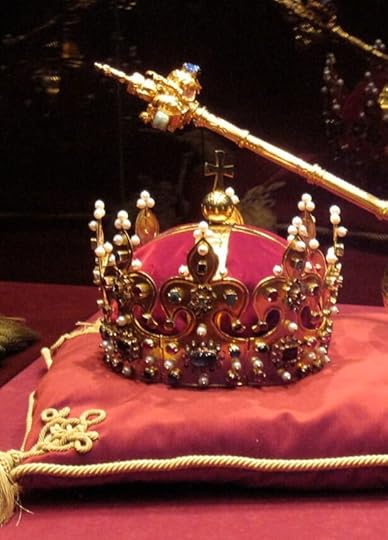
L to R: Princess Aurora, “Sleeping Beauty” -1959; the Braganza Tiara - 1829, Queen Rania’s diamond tiara, King Hubert, “Sleeping Beauty” - 1959; and the crown of Boleslaw I the Brave (replica made in 2001-2003 after originals were lost after 1036 and 1794).
Aurora (1959) - I couldn’t find any plain gold tiaras in this shape, but I did find a few modern silver and diamond that resemble it, such as the Braganza Tiara and Queen Rania’s Diamond Tiara.
King Hubert - I haven’t seen many crowns like this that don’t have arches but DO have a cap, but I DID find this one from the Polish crown jewels, which has arches but they’re so low to the cap that you can only see them from certain angles - The Crown of Bolesław I the Brave, which was the coronation crown of the Polish monarchs.
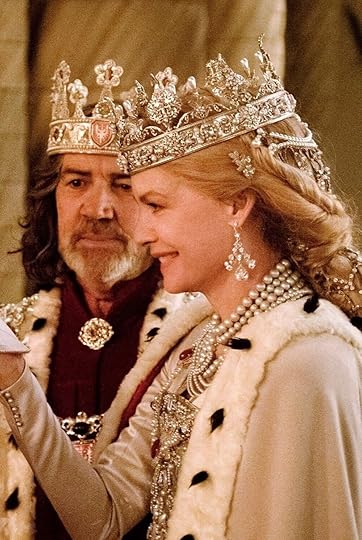
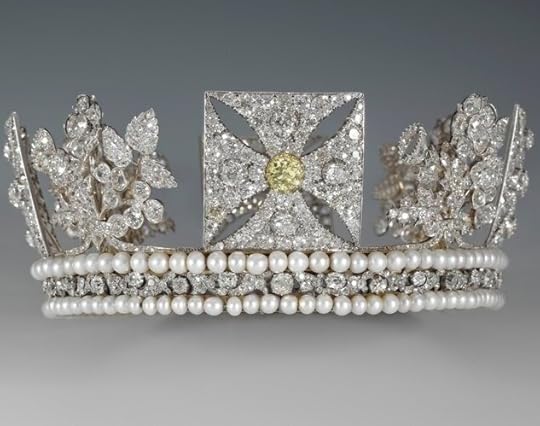
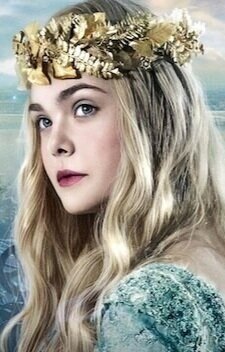
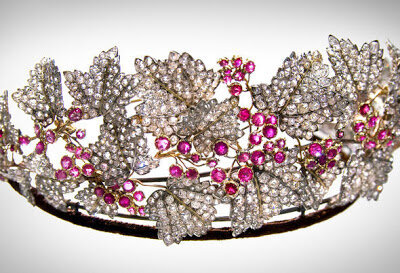
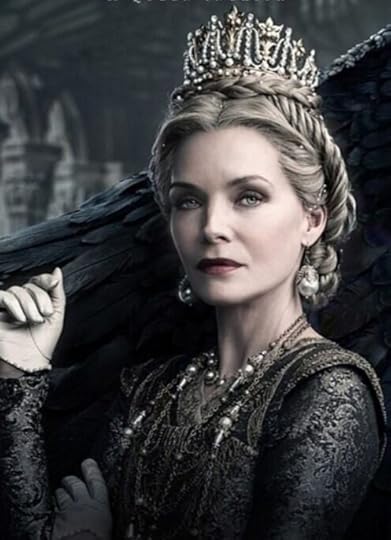
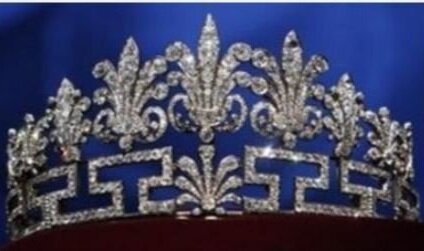
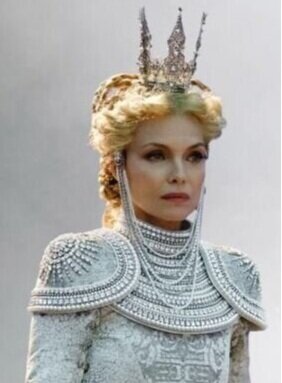
Queen Ingrith, “Maleficent: Mistress of All Evil” - 2019
L to R: King John and Queen Ingrith, “Maleficent: Mistress of All Evil” - 2019; George IV State Diadem -1820; Aurora, “Maleficent: Mistress of All Evil” - 2019; Danish Ruby Parure Tiara ; Queen Ingrith, “Maleficent: Mistress of All Evil” - 2019; and the Spencer Honeysuckle Tiara - ~1858 .
King John and Queen Ingrith’s crowns both resemble the George IV State Diadem in their shape, color, and overall sparkliness.
Aurora’s gold vine crown bears a resemblance to the Danish ruby parure tiara.
Queen Ingrith’s silver tiara looks like the Spencer Honeysuckle Tiara in height and overall shape.
Queen Ingrith’s tall, thin tiara shares a lot in common with the tall small crowns worn by the red and white queens in Alice in Wonderland (as discussed earlier).
I’ve actually never seen Maleficent: Mistress of Evil, and now I really want to, if only to figure out why Queen Ingrith gets to wear three different crowns throughout it all!
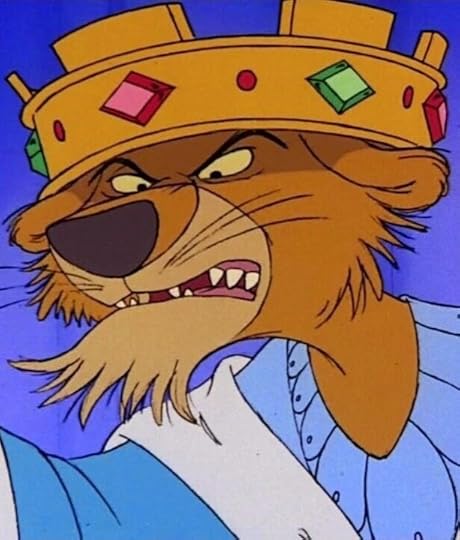
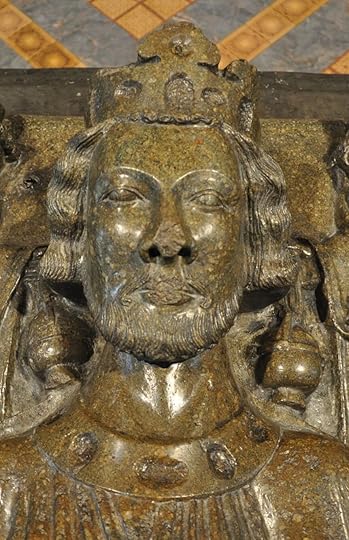
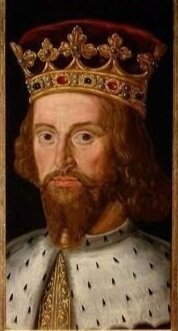

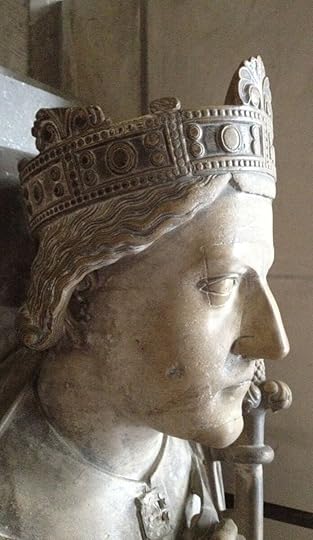
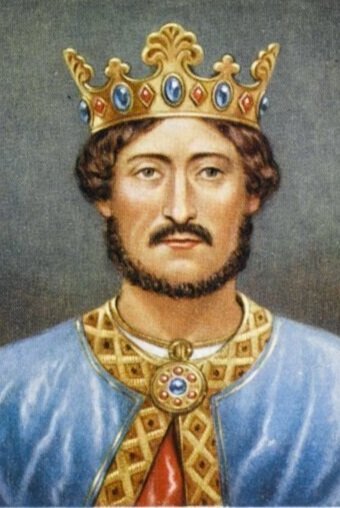
L to R: Prince John, “Robin Hood” - 1973; King John of England’s tomb effigy; portrait of King John; King Richard, “Robin Hood” - 1973; Richard I’s tomb effigy; and Richard I .
Since the stories of Robin Hood include the historical figures Prince John (later King John I) and King Richard I as characters, we can actually look at portraits of them to see how similar the film’s crowns are to their historical counterparts’ crowns. Richard, of course, was known as Richard the Lion-Heart, so both he and Prince John are portrayed as lions.
The crown in Robin Hood appears to be a simplified form of the medieval crown used by King John and Richard I, as seen in their tomb effigies and portraits above. The animated and historical versions all appear to be gold, open crowns with alternating colors and sizes of gemstones, although the animated version has a much more simplified crenelation decoration than the fleur-des-lys/cross like decorations on the historical ones.
I’m fairly sure that the crown or crowns depicted (they LOOK awfully similar, don’t they?) are wearing their state crowns, the “working” crowns of monarchs that they wore regularly, rather than the coronation regalia, which was generally far older, heavier, and more valuable. Although the crown of St. Edward, the traditional coronation regalia for English kings, existed at the time of their reigns, Edward the Confessor wasn’t actually made a saint until 1161, and we don’t actually have any records that his crown was used again before Henry III’s in 1220. Both King Richard and King John reigned before than, from 1189-1199 and 1199-1216 respectively, so it seems likely that they were using different crowns. In addition, written records describing St. Edward’s crown describe it as having arches, while the crown seen in these effigies and paintings is clearly open and without arches.
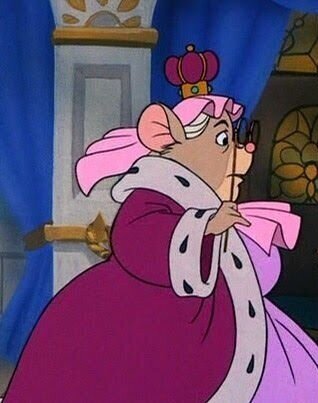
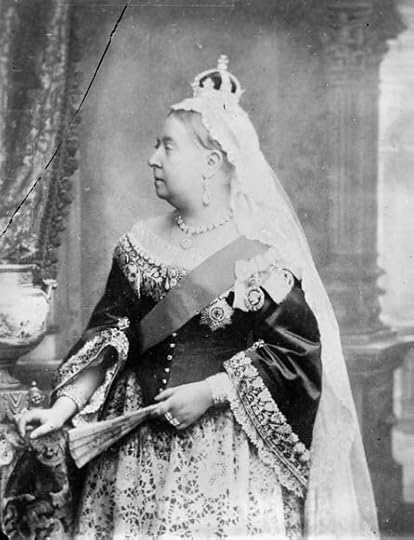
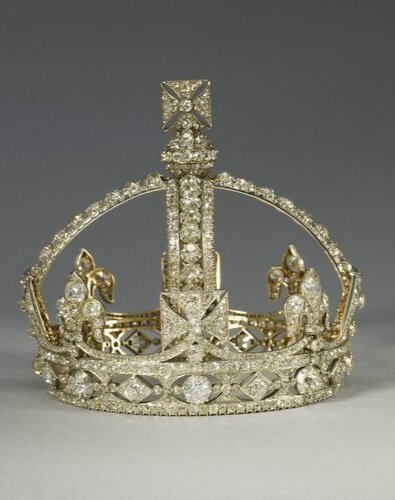
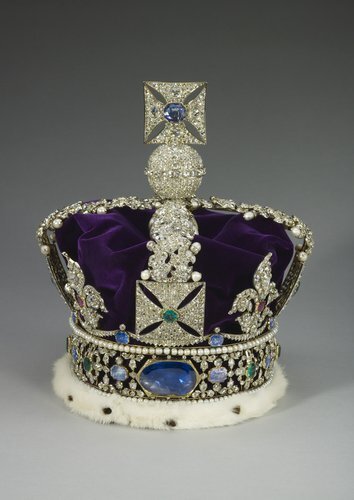
The Mouse Queen, “The Great Mouse Detective” - 1986; Queen Victoria - 1882 (photographer Alexander Bassano); Queen Victoria’s small diamond crown - 1870; and the Imperial State Crown - 1932.
The mouse queen in “The Great Mouse Detective” is clearly an homage to Queen Victoria, as the character appears to have a similar age, shape, and dress to the real life Victoria. Her small crown worn over a veil is the biggest giveaway, as Victoria herself wore such a miniature crown over her widow’s cap following the death of her husband Prince Albert. After Albert died in 1861, the Queen withdrew from public life. Though she eventually came back into the public view in 1870, she refused to wear the imperial state crown again, partly due to its weight and partly because she could not have worn it over her widow’s cap. The miniature imperial crown was created as a substitute. Victoria continued to wear black and white “widow’s weeds” until he death in 1901.
The mouse queen’s crown does appear to have a velvet cap and at least one gemstone in the base that aren’t visible in Victoria’s crown. Though I haven’t seen a crown /exactly/ like the mouse queen’s, it does appear to borrow some inspiration from the Imperial State Crown of the UK, which has a similar velvet cap and prominent gemstone in its base.
That’s it for now! I have many many many more crowns and tiaras to talk about in the future. :) These posts are very fun but oh man, they take a long time. Thanks for reading everyone!
April 21, 2020
Did Henry VIII Ever Pull a "Cask of Amontillado" ?
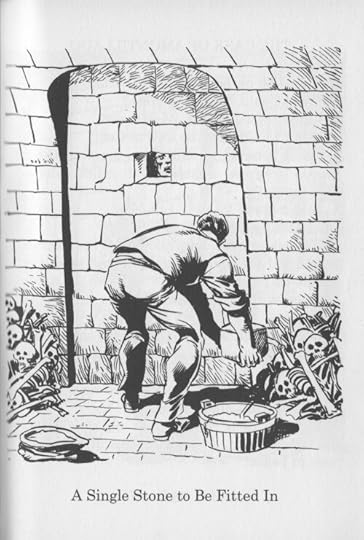
(If you don’t understand the reference, go read Edgar Allen Poe’s “The Cask of Amontillado”)
Apparently I answer Tudor and Shakespeare questions in way too much depth on Reddit for fun now. I’ve had trouble writing or revising fiction since the pandemic and self-isolation began, but researching and writing about history calms me down in a way nothing else does. And AskHistorians on Reddit has a wonderful supply of various questions that haven’t been answered yet.
This one was a particularly out of left field one but I had fun figuring out how to answer it!
So here ya go.
Original Question on r/AskHistorians - Is there any evidence of Henry VIII walling his enemies in buildings?
I've never heard of any English monarch pulling a "Cask of Amontillado" before, and I've been obsessively reading about English history between 1400-1620s for several years now. I dug into this a bit more to see if I could find an answer, but I could not find any sources that indicate that there have been any bodies buried in walls in England. However, as we all know, just because there isn't a source saying it DID happen, doesn't mean it definitely /didn't/ happen.
Human bodies are commonly found buried all around London and England in general, but honestly, that's true of most cities with at least a couple hundred years of history under their belts. It's just something that happens when a place has a very long history dating back before modern regulations on where bodies can be buried. If a house was unknowingly built on top of a burial site, the bodies may be found in the cellar You can read more about that in Smithsonian Magazine here: https://www.smithsonianmag.com/history/dead-beneath-londons-streets-180970385/
I think it's very unlikely that Henry VIII in particular would have engaged in this practice though, for a few specific reasons:
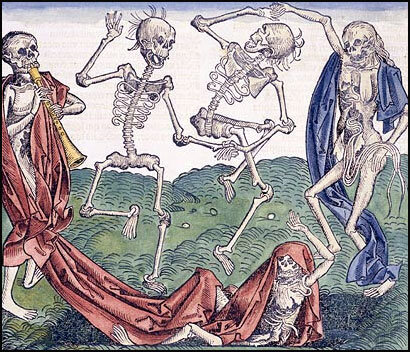
Woodblock by Michael Wolgemut (1434 – 1519) of A Danse Macabre.
-Henry VIII was quite notoriously terrified of illness and sickness, and specifically the Sweating Sickness, likely due to his brother Arthur's death from it in 1502 ( https://www.history.com/news/the-mysterious-epidemic-that-terrified-henry-viii ). He studied medicine and tried to make his own potions to protect him against disease. (http://cms.herbalgram.org/herbalgram/issue42/article546.html?ts=1586114679&signature=51f561c9c7014194d1a849cdaac3de68 ) He also founded the Royal College of Physicians in 1518, made improvements to England's public health services, and ushered in legislation regulating the licensing of medical practitioners (Source: Publishing and Medicine in Early Modern England, by Elizabeth Lane Furdell).
At the time, the miasma theory was one of the dominant theories of disease, which basically said that bad smells cause disease ( http://broughttolife.sciencemuseum.org.uk/broughttolife/techniques/miasmatheory ); decaying corpses, rumor has it, smell pretty foul. Given his obsession with medicine and health, not just for himself, but also for his people, it seems unlikely that Henry would have approved of interring a body into the walls of any building or structure in England.
- He also was a very religious man, who heard mass 3-5 times a day and even wrote a theological argument against some of the teachings of Luther in 1521 ( https://www.christianitytoday.com/history/people/rulers/henry-viii.html ). There were numerous religious rites around death and dying, which require last rites, funeral rites, a vigil for the deceased, and ceremonies by the graveside. Thus, it also seems unlikely that a religious man like Henry VIII would have approved of such mistreatment of a body after death.
Upcoming Warmup/Dance Workshop and Q&A with Six Actress Harriet Watson!
Harriet Watson (current Dance Captain/Swing on Six UK tour) will be giving a 70 minute warmup and dance workshop (featuring a Six Routine) and a 20 minute industry Q&A on May 2! I’ve signed up for this virtual workshop myself and wanted to share it with anyone else who’s interested. :)
Don’t forget to check the time zone as well. I know that 12 pm BST is 7 am ET, where I am. :)
You can sign up for the workshop on Eventbrite!
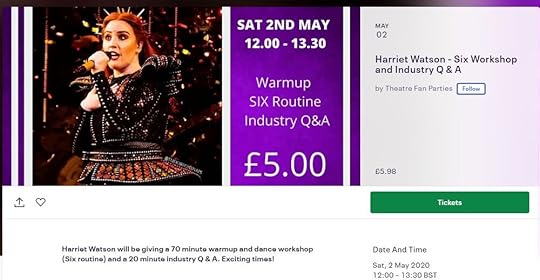
April 20, 2020
"How Accurate Were Shakespeare's Histories?"
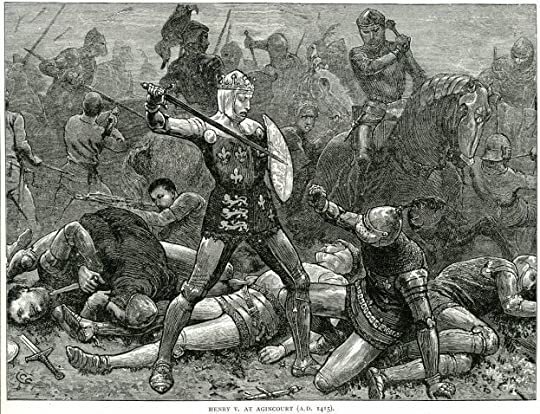
Lithograph depicting a scene from Henry V.
Apparently I answer Tudor and Shakespeare questions in way too much depth on Reddit for fun now. I’ve had trouble writing or revising fiction since the pandemic and self-isolation began, but researching and writing about history calms me down in a way nothing else does. And AskHistorians on Reddit has a wonderful supply of various questions that haven’t been answered yet.
So here ya go.
Original source of the question
“How accurate were Shakespeare’s histories?”
Shakespeare's English history plays were based on a variety of historical sources, so he made /some/ attempt at having /some details/ correct, but he certainly also embellished some facts and highly simplified or deleted other facts to increase drama and simplify plot. His sources themselves were often very biased toward a version of history that supported Tudor legitimacy (although I'm unclear on whether that bias was widely known in Shakespeare's time or not). He also definitely shaded some facts and characters one way or another in order to keep the political leaders and censors of his time happy.
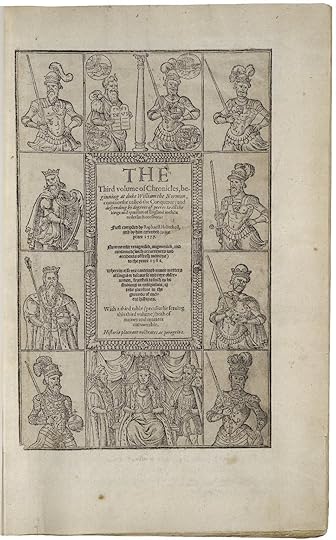
Important Sources for Shakespeare:
Basically every English history play - Holinshed's Chronicles of England, Scotland, and Ireland (1587 - 2nd edition) - This was a highly dramatized version of English history that is apparently just really inaccurate in a lot of places. I really need to read it someday. [also a source for Macbeth and King Lear]
Richard III - Thomas More's History of King Richard the Thirde (1513) - More's portrayal of Richard III as deformed, to the point of causing his mother a particularly troublesome birth, is probably the most famous bit that Shakespeare took from that source. In actuality, though Richard III's skeleton showed that though he had significant scoliosis and likely had visibly uneven shoulders, he wouldn't have had a hunchback.
Simplification -
Shakespeare HIGHLY simplified a lot of the events of the Wars of the Roses in his Henry VI Parts II and III. And honestly....you can't really blame him. I made a simplified timeline of the main events of the Wars of the Roses in November and it's still incredibly complicated (and honestly, it took forever). You can see it on my blog here - https://www.rachaeldickzen.com/blog/2019/11/11/the-wars-of-the-roses-a-timeline-of-main-events
Examples:
- In Henry VI Part 3, as soon as the Earl of Warwick discovers that his protege Edward IV had secretly married Lady Grey (Elizabeth Woodville) while Warwick is off trying to organize a French alliance and marriage for Edward IV, he joins forces with Margaret of Anjou, marries his daughter Anne to her son Edward, and frees Henry VII. This all happens in the space of two acts.
IN ACTUALITY, Edward married Elizabeth Woodville in 1464, but Warwick didn't rebel against Edward IV until April 1469 (rebellion #1). He joined forces with Edward's brother George, Duke of Clarence, and actually captured Edward IV, but eventually released him when it became clear that Parliament wouldn't cooperate with his plan to rule the country through Edward. He and George/Clarence rebelled AGAIN in July 1470 (rebellion #2), but this one didn’t go so well and their plan quickly falls apart. Warwick flees to France, plots with Margaret of Anjou (rebellion #3), marries his daughter to her son Edward, and goes back to England in October 1470 to put Henry VI back on the throne.
I mean. It's easy to understand why Shakespeare cut out a few rebellions there, just for the sake of time and to keep things from being super confusing.
- Richard III portrays Richard marrying Anne Neville immediately before the death of his brother Edward IV and becoming king not too long after. In actuality, Richard and Anne married in spring 1472, Edward IV didn't die until April 1483, and Richard III didn't become king until July 1483.
[image error]
"Plucking the Red and White Roses in the Old Temple Gardens" after the original 1910 fresco painting by Henry Albert Payne (British, 1868-1940) based upon a scene in Shakespeare's Henry VI.
Dramatic alterations:
Various examples:
- Henry IV Part 1 - Sir Henry Percy (Hotspur) is portrayed as a young man the same age as Prince Hal, but in reality, Hotspur was actually three years older than Hal's dad Henry IV. This increases drama by placing pressure on Hal to behave more like the ambitious leader Hotspur.
- Henry V - In the play, it's stated that the English had fewer than 30 casualities while the French had 10,000! In actuality, about 112-600 of the English and about 6,000 of the French were killed.
- Henry VI Part 1 - The famed "roses" of the Wars of the Roses are a bit of a Tudor invention, which Shakespeare expanded on. Although the Yorks did use the white rose as a symbol from early on in the conflict, the Lancastrian red rose wasn't used until after Henry Tudor defeated Richard III at the Battle of Bosworth. These two roses were combined to form the "Tudor Rose," a symbol of the unity of the two houses.
In addition, it also just isn't accurate to imagine that only one symbol was used by each noble family. Just among the York brothers alone, in addition to the white rose, Edward IV used the sun in splendor, a falcon, a black dragon, and a white lion (among several others), while Richard used a white boar and "a white falcon with a virgin's face holding a white rose." But again, portraying that in a play would make things very confusing (and Shakespeare’s histories are already confusing enough when it comes to names, since he often refers to characters by their titles, which often change!).
- Henry VI Part 2 - Richard of Gloucester (the eventual Richard III), and his brother Edward (eventual Edward IV) are both portrayed as adults at the time of the first battle of St. Albans. Historically, Richard was only 3 years old and Edward was only 13 when this battle occurred.
- In addition, a TON of the events in Richard III are inserted for dramatic effect. There is zero evidence that Richard killed his wife Anne (she probably died of tuberculosis), and he definitely didn't seduce her at the funeral for her father-in-law Henry VI. Henry VI died in May 1471 and Anne and Richard didn't marry until the spring of 1472. There's also good evidence that Richard and Anne actually really had a lovely romance; he was determined to marry her and may have rescued her from his brother Clarence's attempts to hide her away. Anne and Richard were crowned in the first joint coronation in almost 200 years. But this doesn’t suit the Tudor propaganda need to portray Richard as a villain.
George Duke of Clarence is portrayed very sympathetically in Richard III, but in reality, he was kind of a jerk who rebelled against his own brother 2-3 times and continually tried to start up trouble. The play also shows Clarence being murdered by Richard's (hilarious) henchmen, but in actuality, Clarence was put on trial for treason, and privately executed on the order of his brother Edward IV.
The disappearance of the Princes in the Tower was blamed on Richard III at the time, but there's no actual evidence connecting him (or really anyone) to their deaths.
Propaganda Elements:
Shakespeare was writing and producing plays under Queen Elizabeth I and King James I, only a few generations away from the intense violence of the Wars of the Roses, so obviously, he needed to represent Elizabeth's famous ancestors as being on the right side of history. Even after her death, Elizabeth I remained incredibly popular with the people, so Shakespeare had to be careful with portrayals of her ancestors and lineage.
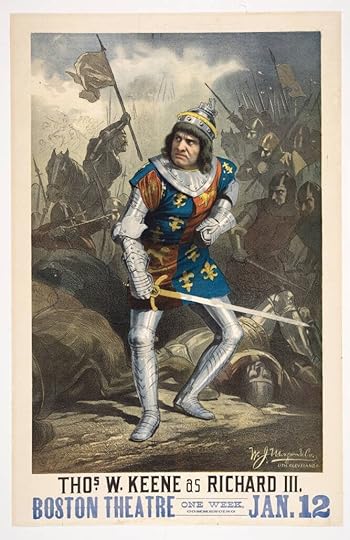
Henry VIII is perhaps the best example of Tudor propaganda. This play covers Henry VIII's break from Catherine of Aragon and joining with Anne Boleyn (Elizabeth's mother) and covers the downfall of Cardinal Wolsey, but strategically ends right at Elizabeth's birth and doesn't discuss, oh, Anne's downfall and beheading, or Henry's four other wives. The play is remarkably stilted and boring compared to all of Shakespeare's other plays, likely because he felt inhibited by the restrictions and expectations of the time (in fact, plenty of people have speculated that Shakespeare didn't write Henry VIII or wrote it with a co-writer because it's so different from his other plays). The play also ends with huge adulation of the baby elizabeth and what a blessing she will be upon her people; as the second daughter of the king who already had a bastard son (Henry Fitzroy) he was in the process of making legitimate, she was not expected to inherit at her birth so this is just obvious propaganda here.
Tudor propaganda elements are also obvious in Richard II, in which John of Gaunt is portrayed very differently than he is in Holinshed's Chronicles, Shakespeare’s primary sources for his histories. Holinshed didn't portray Gaunt in a terribly flattering way, but in Richard II, he's the wisest, most reasonable, and most patriotic character in the play. This is likely because Queen Elizabeth traced her lineage directly back to John of Gaunt. (Gaunt's characterization in the play is much closer to his portrayal in Froissart's Chronicles.)
Richard II is also an interesting play to look at, as it portrays the rebellion against and downfall of a king, who was believed to be divinely anointed by god as the country's leader. That's not the type of idea you want to put in your subjects' heads (The deposition scene in the play is missing from most printed editions of the play until the fourth quarto, well into the reign of James I). But the play is written to make it very clear that Elizabeth's own ancestors disagreed with the rebellion. It's an interesting tightrope to walk- as the next few history plays basically emphasize how awesome Henry IV and Henry V are, and just sort of strategically ignore that the only reason they were in power was because of Henry Bolingbroke's rebellion against the rightful king.
Richard III is portrayed as an outright villain in Shakespeare's histories for propaganda reasons as well. Queen Elizabeth's grandfather Henry VII killed Richard on the battlefield at Bosworth and took his crown by right of conquest. Since this was again, a divinely anointed sovereign, Tudor writers really wanted to portray Richard III as just the WORST of the worst to justify the Tudors' actions in overthrowing him. The Tudors' claim to the English throne was not terribly strong, so this propaganda against Richard III was also necessary to increase their own legitimacy.



